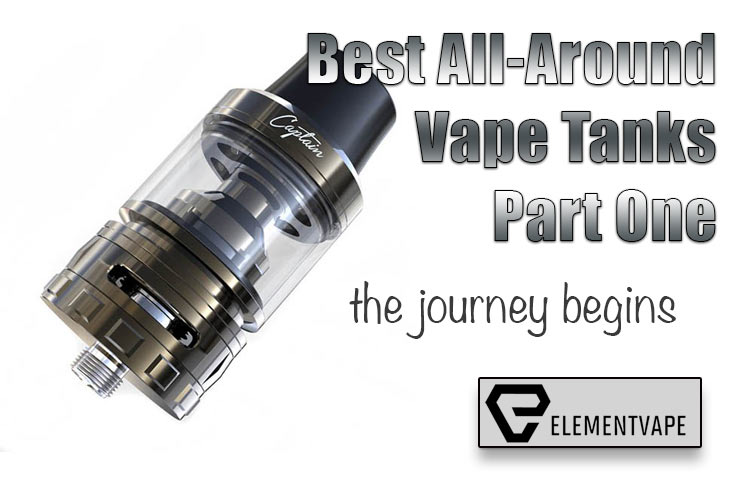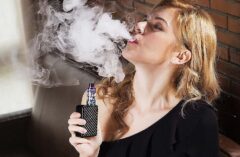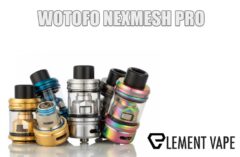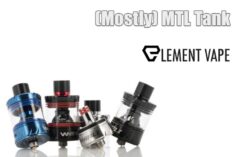Table of Contents [show]
Now that most of you have looked through our recent Best Sub-Ohm Tanks for Cloud Chasers, it’s time to look at ALL Vape Tanks and provide our list of Best All-Around Vape Tanks, for those Vapers that believe there is more to a “tank” than just clouds of vapor. (Think, the TFV12 Prince from SMOK, the Valyrian from Uwell, or the AMP Vaping The Tanker)
Before we get to the “Best” list we’ll publish later this week, we’ll discuss a little about what a Vape Tank really is, what it consists of, and how to figure out if the manufacturer is playing loose with their marketing.

What is a Vape Tank Anyway?
A vape tank is any device that comprises an e-liquid chamber, an atomizer, a filling method, and finally, a drip tip. The Vaper then utilizes these components in order to heat the coils that creates the vapor that is then pulled through the drip tip by the user’s inhalation efforts (the ‘pull’). Whew! Trust me, it sounds more complicated than it is.
A Vape Tank must have access to a power source in order to heat the atomizer (coils) so that it will create vapor. To do that, the tank connects to a Vape Battery, or Mod, (mostly regulated mods these days), with plenty of safety protections in place.
Every Vape Tanks is comprised of these vital components. It is the quality of these components, the design of airflow system, and the effectiveness of the atomizer coils and wicking materials, that dicate the performance of a Vape Tank.
Manufacturers can use the best materials available, yet if the airflow design isn’t thought out and tested, the tank won’t produce as well as it could. Same with the atomizer coils; the heating element (wires), and the wicking (100% organic cotton most of the time, and ceramic on occasion), if the atomizer lacks good design or poor materials, the performance just isn’t there.
Points to Remember
The atomizer (coil), prebuilt or handmade by the user through a Tank’s optional RBA, is the very heart of every vape tank. The atomizer holds the heating coil (Kanthal, Titanium, Nickel, or Stainless-Steel) and wicking material, generally organic Japanese cotton. Some atomizers use a Ceramic wicking with the heating element concealed within the ceramic wick.
One of the best ceramic coils is the cCell by Vaporesso. Vaporesso’s cCell vape coils have been a real game changer when they were introduced a couple of years back, though today it seems to be suffering due to the strides made by SMOK and Uwell and their respective Sub-Ohm Tanks.
The ceramic wicking of the cCell and other ceramic coils, is a porous ceramic material with the heating wire embedded within, and sometimes not. Many people, including the publisher of Spinfuel VAPE, believe that ceramic coils deliver the purest flavorfrom any e-juice when compared to cotton wicks and wire coils. That said, in addition to the cCell prebuilt coil with Kanthal, Vaporesso makes the cCell Coil with Nickel, Titanium, and Stainless-Steel.
Ceramic coils can also handle higher wattage than regular cotton/wire coils, they can produce excellent vapor and true flavor fidelity, and it is much harder to destroy a ceramic coil than it is a cotton wick coil through dry burns.
The Resistance Lives
Lastly, it is the resistance level of the coil that determines how much power (wattage) is drawn from the ‘battery’ as well as how much ‘heat’ gets generated. Coils will realistically last one to two weeks before sputtering out. A spent coil begins to fail in performance, with less flavor and/or vapor, and can create a burnt taste when a user pulls on the drip tip of the tank. Ceramic atomizers can last longer, especially the ones that use no cotton in the wicking, but all coils will fail at some point. ( I think it’s obvious I like ceramic coils)
Note*It is easy to kill a coil made with organic cotton by vaping with an e-juice that contains excessive amounts of sweeteners. Some Coil Killer juice can knock out a coil in 24 hours of less. Be aware of coil killing e-liquids.
The Parts of a Vape Tank - From the Top to the Bottom
Drip Tip – the drip tip can also be referred to as the mouthpiece that the user pulls air through.
Every modern vape tank has from slightly different, to wildly different, drip tips. Some may be a narrow drip tip (for MTL vaping) or a wide-bore drip tip for Direct Lung (DL) vaping, and some are wide at the bottom and get thinner moving up.
For years the most popular drip tip was known as a 510-drip tip, and users could swap out drip tips in the thousands to fit their particular tastes, or even moods. More recently, the 810-drip tip has become a very popular size, especially for cloud chasing tanks. These drip tips are wider, and the materials could be Delrin, Resin, or even SMOKTech’s new Cobra Resin materials.
510 and 810 drip tips can come in a variety of sizes and shapes. A Delrin drip tip is terrific with heat resistance and can remain cool while vaping at high wattages or temperature settings. Even today, some tank manufacturers will create a tank with little heat resistance, and a decent pull from the drip tip can burn a person’s lips in seconds.
Top Cap – the top cap is simply the top portion of the vape tank parts. The top cap may thread directly into the tank’s chimney or could be permanently attached to the chimney. Today’s top-fill vape tanks will sometimes use a removable top cap, a sliding top cap, or a hinged top like the TFV8 and TFV12 SMOK Tanks use. It’s interesting to note that one of the newest tanks on the market, the HorizonTech Falcon, uses the older method of complete removal of the top cap to reveal to large fill slots for filling the tank.
Tube – the tube is a glass tank that serves as the e-liquid container. Quartz or more commonly, Borosilicate Glassare the most used glass for tanks. Some companies insist on calling their glass tubes Pyrex glass. Pyrex is a brand, not a type of glass, and if used on any tank it must be licensed and engraved with the Pyrex logo. That said, there are two types of Pyrex glass, soda-lime glass used in consumer products, and theBorosilicate Glass, used in the scientific community. Borosilicate Glass is more expensive than soda-lime glass, and unless we see actual certification that a tank claiming to use Borosilicate Glass is accurate, we assume the glass tube is actually soda-lime, an inexpensive glass. Borosilicate Glass can be detected in higher quality tanks because the glass is heat resistant, or at least much more heat resistant than soda-lime.
Chimney – the chimney is the section of the vape tank that connects the cap to the base and where the produced vapor is drawn through the drip tip. Many modern tanks are designed so that the atomizer coil attaches to the chimney instead of the base. Problems can occur when the factory has tightened the preinstalled coil to the chimney way too tight, and it becomes nearly impossible to remove the coil without completely disassembling the tank and using a tool of some sort to loosen the grip of the coil.
Atomizer / Coil – See above
Tank Base – the tank base is usually where the atomizer coil is securely fastened (but not always), and the glass tube is often secured with an O-ring to seal the liquid in. These O-rings prevent leakage for quite a while, but there is a reason why most tank packages include extra ones. The base of the tank is also where most airflow slots are, though there are several tanks that have moved the airflow slots to the top part of the tank. A key point to remember is that the more the glass tube is removed from the base of the tank, the more the O-ring wears down. It is a frequent source of leaking because it prevents a vacuum seal for the liquid in the tank.
510-Connector – the 510 connector is the threaded stem that protrudes out from the bottom of the tank. It connects the tank to the battery or mod. The 510 is now the universal size used on all tanks. Some connectors are gold plated for a more secure electrical pass-through.
MTL or DL Vape Tank? Which is Right for You?
A Mouth-To-Lung Vape Tank will almost always use atomizer coils with resistances in excess of 1.0 ohm. While not my choice for a tank, I was genuinely surprised by how many experienced, and advanced, Vapers have returned to the MTL Vape Tank.
The typical MTL Tank is said to be the ‘New Vapers’ best friend. First, most smokers use a mouth-to-lung method while smoking cigarettes, so replicating that same method with MTL vaping is very familiar. Secondly, I’ve seen new Vapers freak out at the sight of a Direct Lung Vaper exhaling massive clouds of vapor. The MTL Vape Tank is friendlier to new Vapers, and very satisfying from a flavor standpoint among some experienced Vapers.
The Mouth to Lung method works like this: The user, or Vaper, draws the vapor into the mouth, and only after drawing it in does the user inhale the vapor. When I smoked cigarettes, this was exactly how I, and millions of others, smoked.
MTL Vape Tanks will not produce the type of vapor clouds that sub-ohm tanks do. Usually the e-liquid used in an MTL Tank is thinner, with more PG (propylene glycol) than a High VG (vegetable glycerin) e-juice. VG is thick, and when vaporized creates much denser vapor.
However, one of the selling points about MTL vape tanks is that by using a thinner, higher PG e-juice, the “throat hit” is stronger. In addition, MTL Vapers will sometimes use e-juice with a higher nicotine content than sub-ohm users, creating to a stronger, and desirable, throat hit. Just a few years back, before the popularity of sub-ohm vaping, the Throat Hit was the end-all-be-all of vaping.
Some tanks, like the SMOK Spirals Tank, offers an MTL experience that focuses on flavor fidelity more than anything else.
Conclusion–Mouth-To-Lung Vape Tanks:
- Resistance of the coils are usually over 1.0 ohms (some are 0.8-ohm)
- The user draws the vapor into the mouth and then the vapor is inhaled
- E-liquids with 50% PG content is the usual ratio for MTL Tanks
- Using High VG E-liquids can cause coil death, hard pulls, and poor performance.
The Direct Lung Vape Tank or the Sub-Ohm Vape Tank
Sub-Ohm vape tanks use coil resistances lower than 1.0-ohm. Modern Sub-Ohm tanks use various resistances of 0.15, 0.2, 0.25, 0.4, and 0.5-ohm resistances more than any other. These resistances require more wattage (power) for good performance and will create more vapor than MTL coils.
Sub-Ohm Vape Tanks were created to satisfy the demands of Vapers that wanted a lot more vapor than pre-Sub-Ohm tanks, like the SMOK TFV12 Cloud Beast King or Vaporesso Cascade. Soon after the Sub-Ohm tank took off, large vapor was christened “Clouds”. It became all about “Cloud Chasing”, the pursuit for the most vapor from a single pull from a drip tip.
Because these lower resistance coils draw more power (wattage), battery life suffers, and users will consume more e-juice than they did prior to sub-ohmming. In early 2013 I told someone I was a heavy Vaper, consuming almost 10mL a day. The person would not believe me. Today, I often vape 30mL per day of HighVG (80/20) in a tank with a 0.12-ohm coil at 110W of power.
Fortunately, e-juice prices have been cut in half, or more, since those pre-sub-ohm days, except for a small handful of brands that continue to sell 30mL bottles for $25-$30 each. Most good e-liquids today sell for $16-$20 and come in 60mL to 120mL bottles. The selection at Element Vape is representative of some of the best e-juices for all Vape Tanks.
Sub-Ohm Vape Tanks are also called Direct Lung Vape Tanks, despite the ability with most Sub-Ohms of stopping down the airflow to replicate an MTL vape experience.
Direct Lung Vaping is the method where the user draws in vapor directly into the lungs. As a smoker I found this a disgusting way to smoke, but as a Vaper, anything butDirect Lung feels strange.
Sub-Ohm Vape Tanks, or DL tanks, have wide-bore drip tips in order to help draw more vapor in from the atomizer coils. Sub-Ohm tanks are made to be used with HighVG e-liquids, from a 70/30 blend all the way to 100% VG. The higher the VG the more clouds, and the softer the throat hit.
In addition, vaping at higher wattages with lower resistance coils vaporize nicotineso well that most Vapers do not vape any e-juice with more than 6mg of nicotine. I use 3mg nicotine e-juice.
For the record; a throat hit from a sub-ohm tank with a 50% PG and 12mg nicotine would cause such a hard throat hit that it would be nearly impossible for any Vaper to enjoy.
Conclusion- Sub Ohm (DL) Tanks:
- resistances much lower than 1.0-ohms with modern tanks
- Users draw the vapor directly into the lungs in one pull
- High VG, low nicotine blends are the preferred e-juice for sub-ohms
Vaping with Temperature Control Atomizers
There is no such thing as a TC Vape Tank. Any tank can be a temp-control tank with the right heating elements and used with a Mod with Temperature Control electronics built into the operating chipset.
It is the coil wire used that defines whether or not a Vape Tank can be used on a TC-enabled mod.
The three typical coil wires used in temperature control vaping are; nickel, stainless-steel, and titanium.
Stainless-steel wire is unique in that this material can be used in both Wattage Mode and Temperature Control Mode. The problem with any of these wires is that they are never as good as delivering the same quality of flavoras Kanthal A1.
In 2017 the success of Temperature Control vaping began to wane. Today, in 2018, the vast majority of prebuilt coils are Kanthal A1, which does not work in TC mode. It is my opinion that TC enabled Mods are rarely used in TC mode.
There are Tanks, and then there are Tanks…
Hundreds of tanks of all sizes, shapes, materials, and vape quality, exist on the market today. Most of the Tanks that come to Spinfuel VAPE perform anywhere from “pretty good” to “mind-blowing”.
There are tanks that feel expensive, and tanks that feel cheap. And while it is hard not to judge a tank by its looks, some of the plainest tanks (Eleaf MELO 300) have performed outstandingly well, while some of the prettiest tanksperformed poorly. Worse still, you can read the specs of a tank and it will make the tank sound exciting, but when the time comes to actually vape with it, it becomes a huge disappointment.
Choosing the Best All-Around Tanks for our upcoming list wasn’t easy. This list will contain some heavy clouds producers with easy draws, as well as a few MTL (Mouth to Lung) tanks with strict draws and much less vapor. The best all-around tanks are high quality, fairly priced, and perform exactly how you want it to perform.
A good tank, one that would make a list like ours, would not surprise you by delivering horrible flavor, or less/more vapor than youwanted, and would not burn you or your lips with moderate to heavy vaping. The best tanks are out there, and you’ll soon know which ones we believe make the cut.





